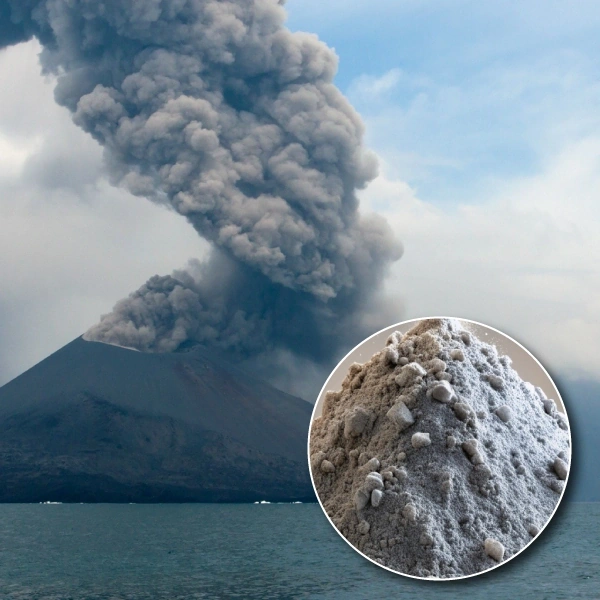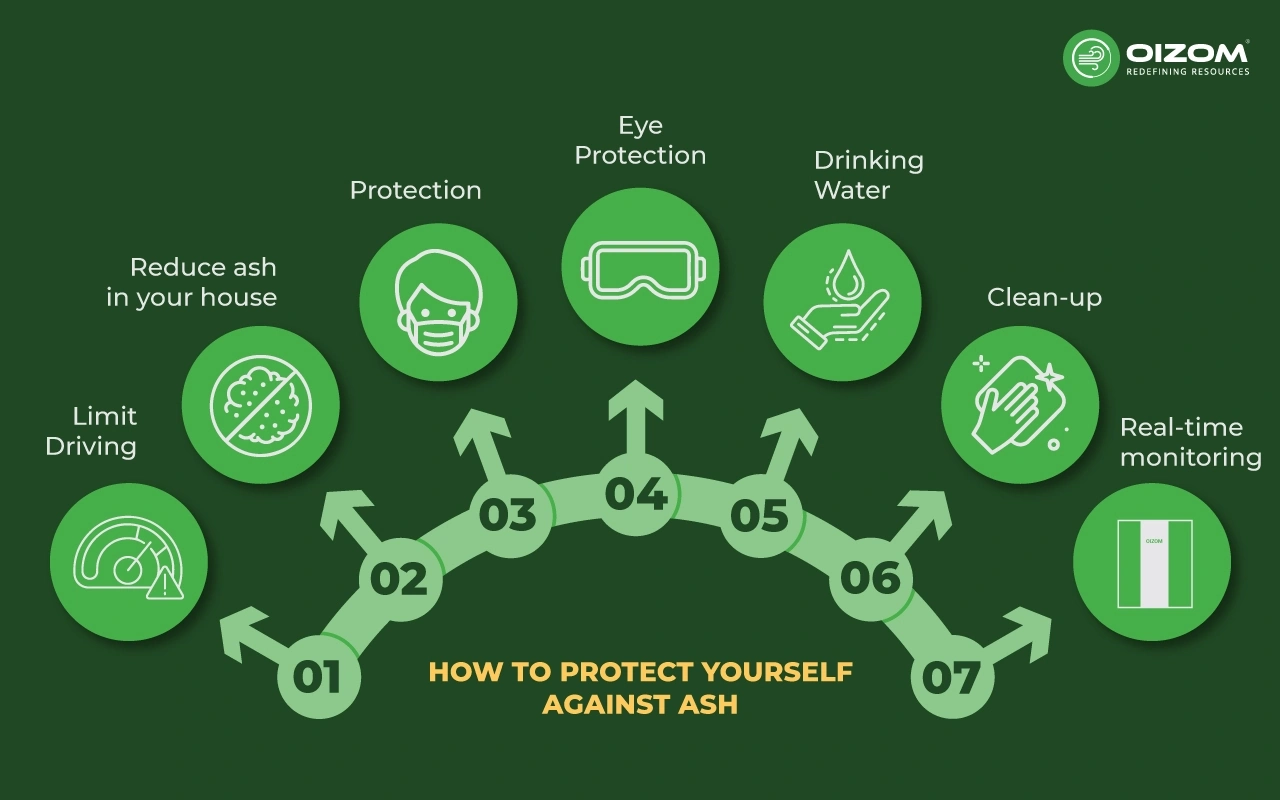Volcanic Ash And Its Impact On Human Health
Have you ever wondered about the bits of soot and ash that can rain down on neighborhoods when a volcano erupts? It almost feels surreal that something that looks so harmless from a distance could have such profound impacts on daily life, especially when it comes to your health. Volcanic ash, while captivating in its own way, presents a host of challenges both in the short term and long term. Let’s chat a bit about what volcanic ash is and why it’s something you should definitely be clued up on.

What Exactly is Volcanic Ash?
Volcanic ash is not the fluffy stuff you might find in your fireplace. Nope, it’s much more deceptive than that. These are fine particles and shards of rock that erupt into the atmosphere when volcanic activity occurs. It’s the result of magma exploding into the air and fragmenting.
Composition of Volcanic Ash
The makeup of volcanic ash is primarily tiny particles of volcanic glass, rock, and minerals. When you break it down to its essentials, it includes materials like silica, with various toxic substances that can hitch a ride, such as compounds of sulfur and chlorine, not particularly things you’d want in your airspace or on your skin.
How is Volcanic Ash Formed?
When a volcano erupts, there’s a dramatic release of pressure and magma gets blown into the air. That high energy disperses magma as ash particles. As volatile materials in the magma rapidly expand due to pressure reductions, you’re left with volcanic ash suspended in the atmosphere, which can travel great distances carried by winds.
The Immediate Impact on Human Health
The health impacts of volcanic ash are immediate and often unavoidable for those near an erupting volcano. Even for folks miles away, ash can be a noteworthy aggravation.
Respiratory Issues
Breathing in volcanic ash is no joke. Those particles can be easily inhaled, since they’re so tiny, and once they settle into your lungs, they can wreak havoc. Think of it like trying to breathe in a room filled with irritating dust. Conditions such as asthma can be exacerbated by exposure, and even people without pre-existing conditions can experience symptoms like coughing and irritated lungs.
Skin and Eye Irritation
It’s not just your lungs at stake when it comes to volcanic ash. Skin contact can lead to irritation, while the eyes, sensitive as they are, might sting or feel gritty as ash particles make contact. This can result in significant discomfort and potential for infection if the eyes are not properly rinsed and cared for after exposure.
Long-term Health Consequences
You might think that once the ash settles, the dangers dissipate. Unfortunately, longer exposure can lead to more persistent health issues. Prolonged exposure can aggravate cardiovascular diseases, increase the risk of lung diseases, and contribute to diseases similar to those caused by smoking or air pollution.
Indirect Health Implications
Beyond direct exposure, volcanic ash can create knock-on effects that impact health in other insidious ways.
Water Contamination
Ash particles can settle in water supplies, leading to contamination. Once the ash mixes with your municipal water or personal water sources, it can bring with it toxic substances that you wouldn’t want seeping into your body through drinking water.
Food Safety Considerations
Volcanic ash can blanket crops and soil. When this happens, it can affect the food supply. Beyond just being physically unpleasant or damaging to crops, ash can contain harmful chemicals that can enter the food chain, thereby affecting not just plants, but livestock as well.




The Psychological Burden
Witnessing or living in the aftermath of a volcanic eruption and its resultant ash fallout can be quite the stress-inducing scenario. It’s easy to underestimate the psychological toll such events can take.
Stress and Anxiety
There is a natural surge of anxiety in populations both near and far from active volcanoes during eruptions. Concerns about evacuation, property, and such unpredictable environmental changes can result in increased stress levels and potentially contribute to mental health challenges.
Community and Social Disruption
Displacement, community separation, and the challenges of rebuilding can place a heavy toll on people’s psyche. Losing homes or being forced to stay indoors due to ashfall, and grappling with the uncertainty surrounding an active volcano nearby, shifts the very fabric of daily life.

Preparing for Volcanic Ash Exposure
It’s one thing to know about volcanic ash, and quite another to be prepared for an encounter with it. So how can you safeguard your health if you find yourself in such a situation?
Protective Measures
The easiest way to prevent ash-related health issues is through protection. When dealing with ashfall, it’s wise to equip yourself with masks—preferably N95 respirators—that can filter out fine particles, alongside wearing goggles to shield your eyes, and covering skin to prevent irritation.
Mitigating Indoor Air Quality
Keeping volcanic ash from entering indoor spaces is also critical. Closing windows, doors, and using filtered ventilation systems or air purifiers can help maintain a safer indoor environment during periods of high ashfall.
The Role of Community Response
Beyond individual measures, community-level strategies are crucial when dealing with volcanic ash scenarios.
Preparedness Plans
Communities living near volcanoes often have dedicated response plans in place. These cover given procedures during eruptions, including evacuation routes, alert systems, and emergency supply distribution models.
Ongoing Public Education
Education campaigns can make a world of difference. Public information on recognizing symptoms of ash exposure, understanding the significance of proper masking, and knowing what to do when ashfall is forecasted can lose lives.

Understanding Volcanic Ash Through Data
Data driven by historic ash fallout patterns and advanced modeling can provide significant insights for predicting impact zones and intensities. Let’s break this down with a simple table noted for better comprehension:
| Parameter | Details |
|---|---|
| Density of Ash | Correlates with eruption magnitude |
| Wind Patterns | Influence direction and distance of ash travel |
| Geological Data | Identifies high-risk areas post-eruption |
| Health Impact Records | Monitors respiratory cases and outbreaks linked to ash from past eruptions |
The Global Perspective on Volcanic Ash
While volcanoes and resultant ash might seem like niche events, their potential reach is far grander.
Volcanoes Near Populated Areas
Many populous regions globally are in proximity to active volcanoes. For example, Japan, Indonesia, and parts of North America sit over geothermal hotspots. This necessitates the enforced learning and adaptation regarding volcanic ash impacts.
Aviation Concerns
You might not think much of it, but volcanic ash significantly disrupts air travel. When airplanes encounter ash clouds, they can experience engine failure and loss of navigation. This requires constant monitoring and real-time flight adjustments as ash clouds traverse busy flight pathways.

Conclusion
Volcanic ash, as mystifying and enthralling as it may appear, isn’t just a mesmerizing natural phenomenon. It’s a prevalent reminder of Earth’s dynamism and its complex interaction with our lives. From respiratory struggles and water contamination to psychological stress, its impacts are deeply woven into human health considerations.
As you can see, living with—and preparing for—volcanic ash exposure is about awareness, preparation, and community resilience. So, as much as you might want to watch in awe when the earth spews its fiery secrets, remember to consider how these stunning displays can affect both health and everyday life. Keep these insights in tow, because understanding what’s raining down can help ensure that you and your community stay as healthy and prepared as possible in the face of nature’s spectacular, yet formidable, eruptions.